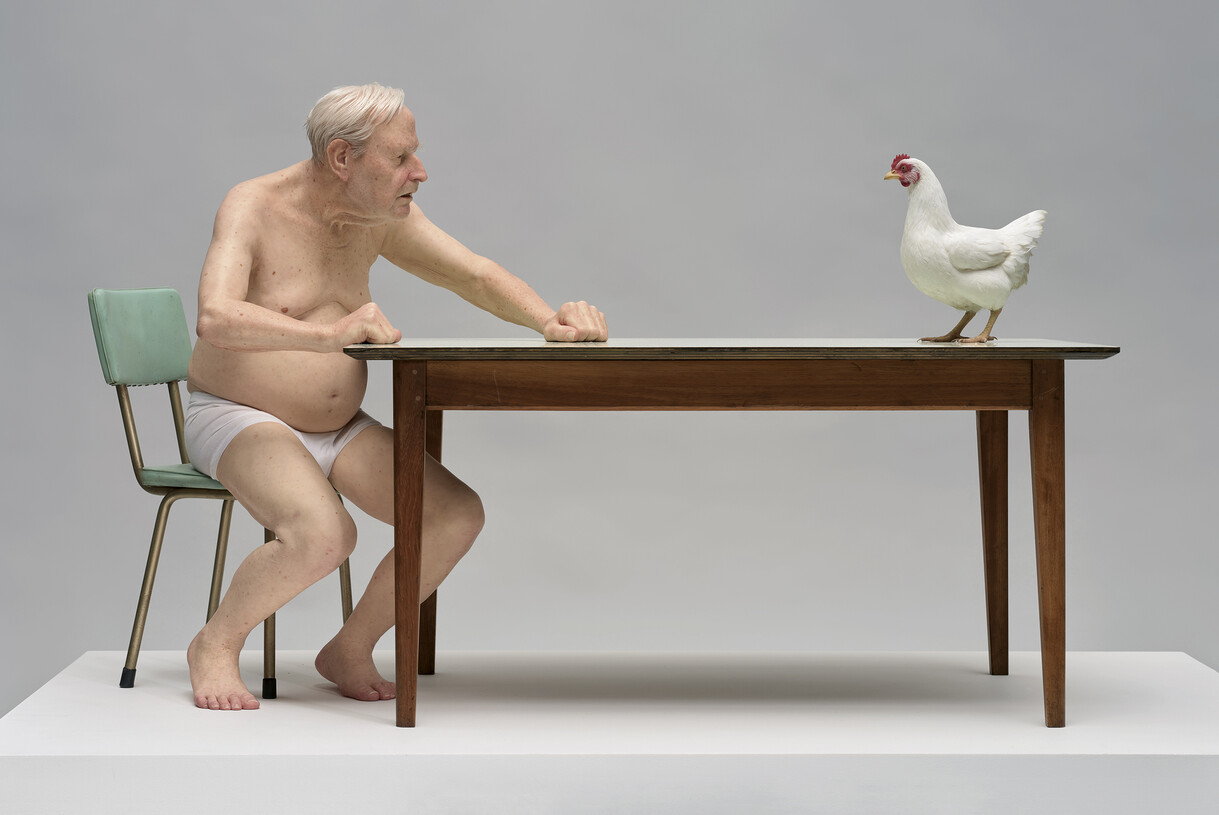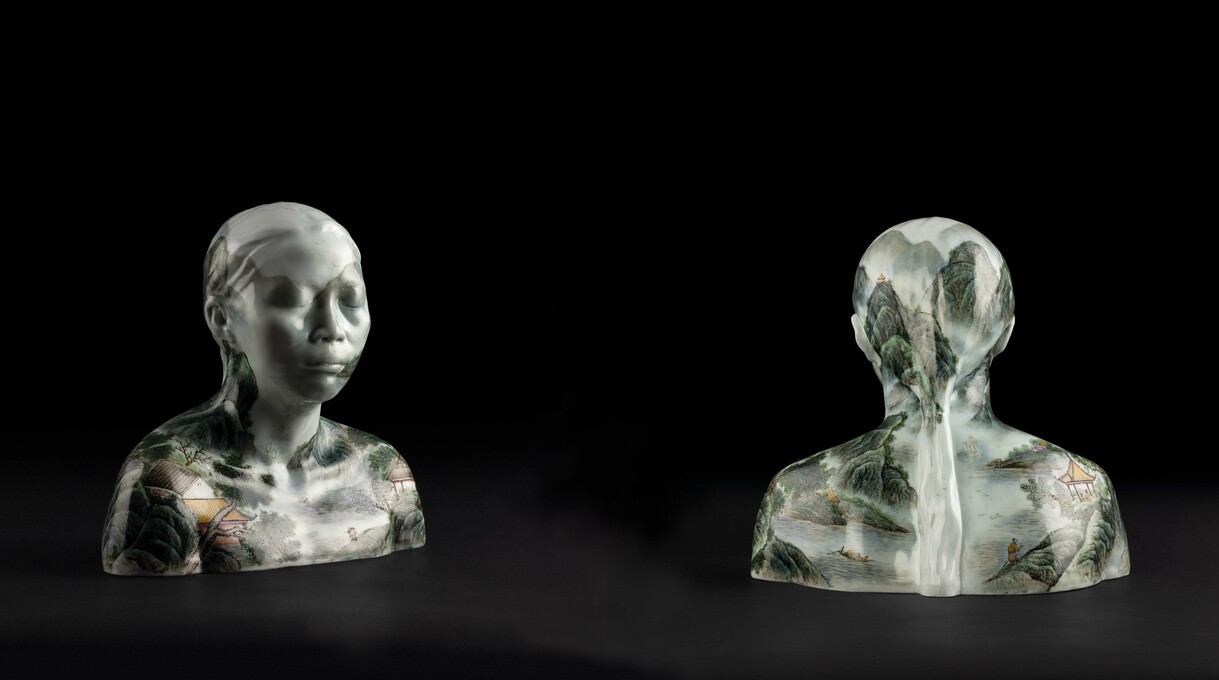Unfamiliars
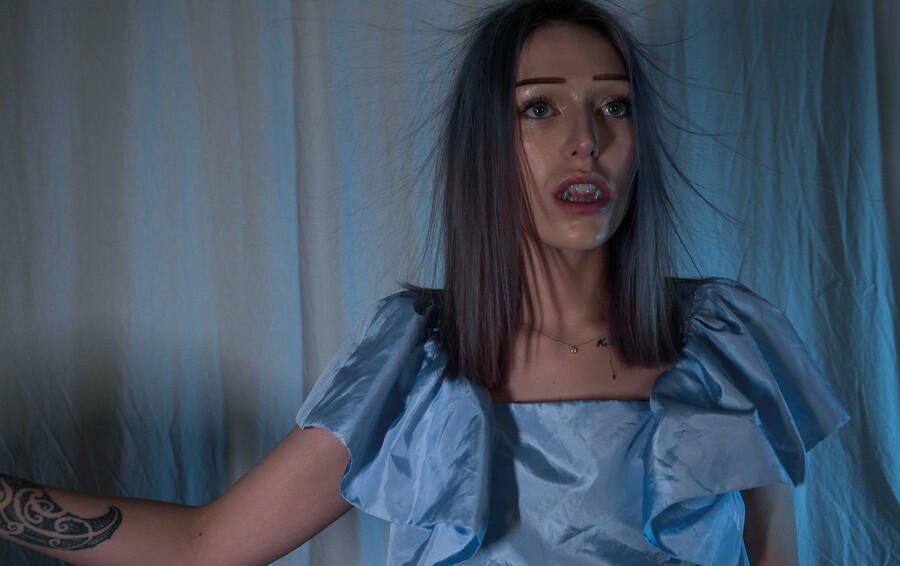
Tia Ranginui The utu of Tāwhirimātea 2023. Photograph. Collection of Christchurch Art Gallery Te Puna o Waiwhetū, purchased 2024
One size doesn’t necessarily fit all. Amongst other ideas, our current exhibition Dummies & Doppelgängers explores how imagined or altered identities can help artists construct worlds that better accommodate them or others. Here, the exhibition’s curator Felicity Milburn considers how this dynamic plays out in the work of two of the featured artists.
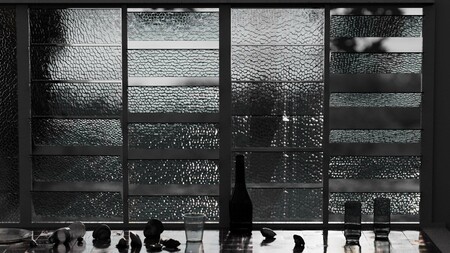
James Barth Earthbound (detail) 2022. Single channel video, HD, sound: Isha Ram Das, 8 mins 57 sec. Courtesy of the artist and Milani Gallery, Meanjin Brisbane
Opening us up to perspectives that might differ from our own is one of the most important things an artist can do. How would it feel, for example, if your true self pulled you away from the body you were born in, and toward something new? Meanjin Brisbane-based artist James Barth explores self-representation and self-embodiment through her lived experience as a trans woman. This has often involved using 3D modelling and computer-generated imagery to create digital avatars that move within reimagined worlds. This footage forms the basis for the compositions of subsequent silkscreen oil paintings, in which the coldness and deliberate imperfection of the source video is preserved. Some of these resulting ‘selves’ suggest celebration and empowerment; others were constructed in a way that is deliberately unconvincing – these intentional ‘flaws’ convey a pervasive atmosphere of shame and fallibility. Always, there is a sense of risk and vulnerability (and therefore, implicitly, courage). In apparent contrast to the agelessness we might associate with artificially produced forms, decomposition is a recurrent motif in Barth’s work, as Australian writer Tim Walsh observed in an incisive essay on her practice. The environments her tableaux unfold in are sweaty and humid, littered with leaves and plants, spilled or half-eaten fruit and other foods. Walsh relates this to a focus on the physical and the body, but also to the idea that one world, in breaking down, can form another. By embracing an iterative process that involves the alteration and layering of media, Barth’s practice creates an expanded field for making and being.

James Barth Earthbound (detail) 2022. Single channel video, HD, sound: Isha Ram Das, 8 mins 57 sec. Courtesy of the artist and Milani Gallery, Meanjin Brisbane
This idea is further explored in Barth’s 2022 video work Earthbound, included in Dummies & Doppelgängers. In it, a disconcertingly banal environment provides the setting for an enigmatic performance of self. In dim black-and-white, our view tracks fluidly through a 1970s-style modernist interior, enclosed by blinds, semi-transparent curtains and opaque glass. Full of shadows and shiny surfaces, it’s an environment that is alive with reflections and frames. Its symmetry is disrupted by evidence of previous, undisclosed activities: paper is strewn across the floor, fruit – some cut or peeled – lies on plates as though discarded. The jagged halves of a broken drinking glass rest on a table. Into this space strides Barth’s digitally modelled avatar, absorbed by all she encounters. The accompanying soundtrack by sound artist and composer Isha Ram Das is an uneasy blend of chimes, vibrations, whistles and scratches. Its uncanniness is echoed in the too-smooth, synthetic movement of the figure as she moves listlessly around the room and out into a wind-swept twilight. Ambiguous, fluid, intangible, Barth’s Earthbound evokes a self that we glimpse in the process of becoming.

Tia Ranginui The tangi of Rūaumoko 2023. Pigment inks on Hahnemühle Photo Rag Ultra Smooth. Collection of Christchurch Art Gallery Te Puna o Waiwhetū, purchased 2024
Whanganui artist Tia Ranginui (Ngāti Hine Oneone) also fills her works with startling imagery: a woman with her fingertips on fire, the glossy haunches of a swimmer rolling forwards into water, a young girl lying on a grassy lawn, her fanned-out hair adorned with shimmering green pūriri moths. Her photographs have a charged and heightened quality – as though powered by the language of dreams or poetry, where even ordinary objects quiver with significance. Often, they take place in surprisingly prosaic settings – the backyards, residential streets and dusty, outdated interiors of her Whanganui hometown. It’s how Ranginui brings these worlds together, lacing the everyday with a strange magic, that makes her works so memorable and so uncanny.
In two works created for the Gallery’s 2023 exhibition Spring Time is Heart-break and subsequently acquired for the collection, Ranginui dials up the intensity by summoning a formidable cast of atua wāhine. The young woman we see in The utu of Tāwhirimātea (2023) crackles with a supernatural energy. With strands of hair bristling from her head and fang- like teeth sprouting from her jaw, she is the deity of weather; powerful, changeable, punishing. Her lustrous blue dress shifts and shimmers – a relic salvaged from the eighties, it bears a passing resemblance to a Victorian gown, and this, with the moko on her forearm, suggests a presence that operates across rather than within time. Embodying the fate of an overheating world, the portentous deity represented in The tangi of Rūaumoko (2023) is the atua of earthquakes, volcanoes and the changing seasons. Eyes closed, arms outstretched, she remains beautiful, even as she is consumed by fire.
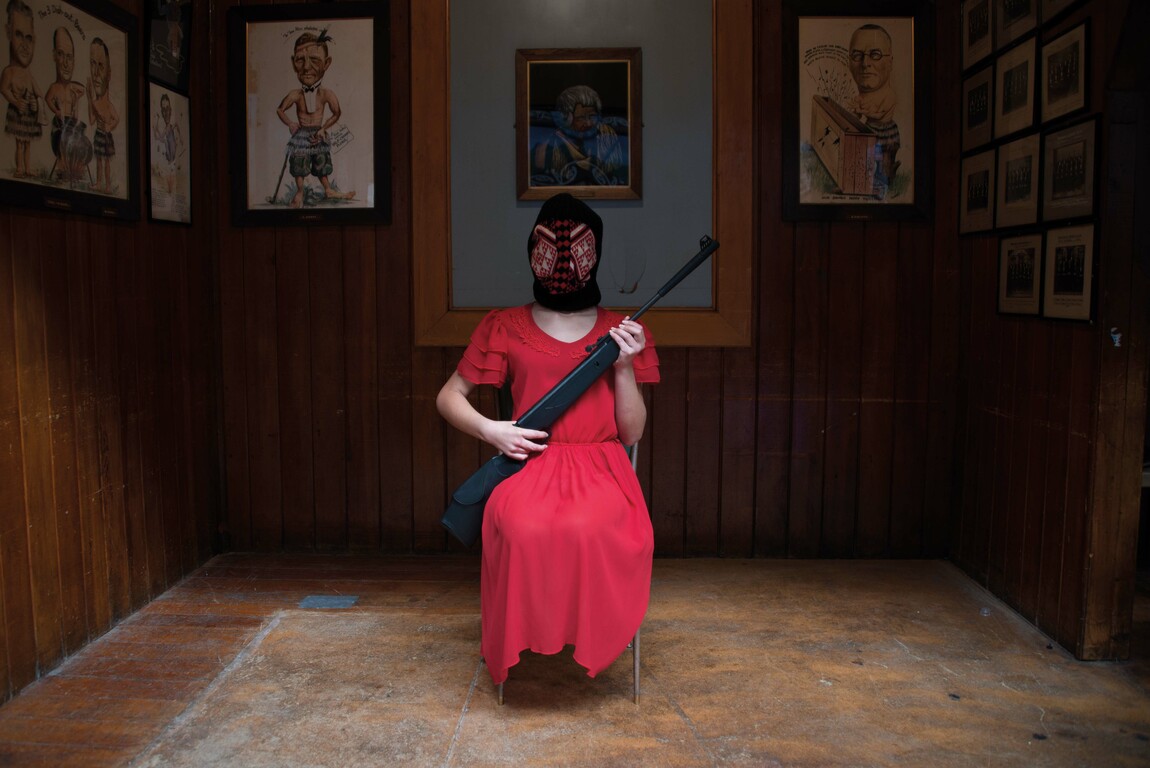
Tia Ranginui The Intellectual ‘Power’ of a Savage Mind 2015. Photograph. Courtesy of the artist
In some works by Ranginui, the outdatedness of the setting is precisely her point. Several were photographed in a building that housed her hometown’s branch of the Savage Club. A male- only organisation founded in London in 1857, it was known for risqué musical performances and sketches featuring racist, minstrel-style caricatures. This format was replicated in many British colonies, including throughout Aotearoa New Zealand, with Ōtautahi Christchurch regrettably no exception. In The Intellectual ‘Power’ of a Savage Mind (2015) Ranginui stages a pointed occupation, positioning a masked and seated female figure, armed with a rifle, on guard in front of an array of crass and offensive ‘Savage Club’ portraits. Her face is covered by a balaclava, her dress is a blazing, dangerous red – the colour of a stop sign, or of blood.
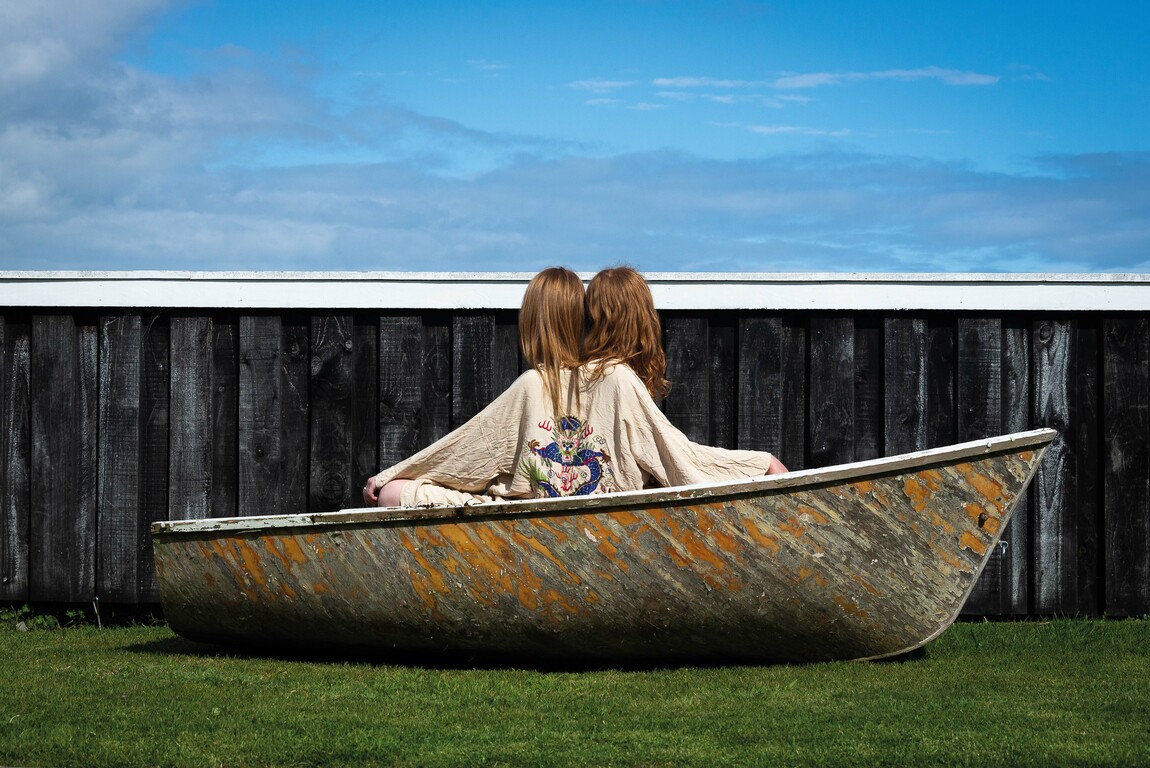
Tia Ranginui Taniwha 2020. Photograph. Courtesy of the artist
The locations for her earlier series Tua o Tāwauwau / Away with the Fairies (2020) are less precise, but no less evocative. Ranginui drew on stories she was told as a child of patupaiarehe, the red-haired, fair-skinned people who live secretively in the mountains and bush of Aotearoa. Though seldom glimpsed by humans, the seductive music of their kōauau and pūtōrino are said to occasionally lure the unwary away from safety. As Ranginui is well aware, they have been seized on by some Pākehā as a way to undermine the takata whenua status of Māori, by making discredited claims that patupaiarehe were descendants of early Europeans who arrived prior to Polynesians. Ranginui views such theories with scorn, seeing them as “exploiting our stories against us”. Her patupaiarehe enter the daylit world of ordinary humans, roaming the streets and gardens of Gonville and Castlecliff. In Taniwha (2020) – featured in Dummies & Doppelgängers – an eerie, doubled figure occupies a weathered, land-locked dinghy. Unexpected and unknowable, they wear a kimono emblazoned with a dragon motif – a sly visual link to the shapeshifting water guardian of the title. Taniwha, like patupaiarehe, are said to hold special knowledge and magical abilities, and the kupu can also describe a powerful leader.
Atua wāhine – godesses
Moko – tattoo
Kōauau – traditional cross-blown flute
Pūtōrino – large traditional flute
Takata whenua – Indigenous people, literally ‘people of the land’
Taniwha – supernatural creature, spirt or monster
Kupu – word








